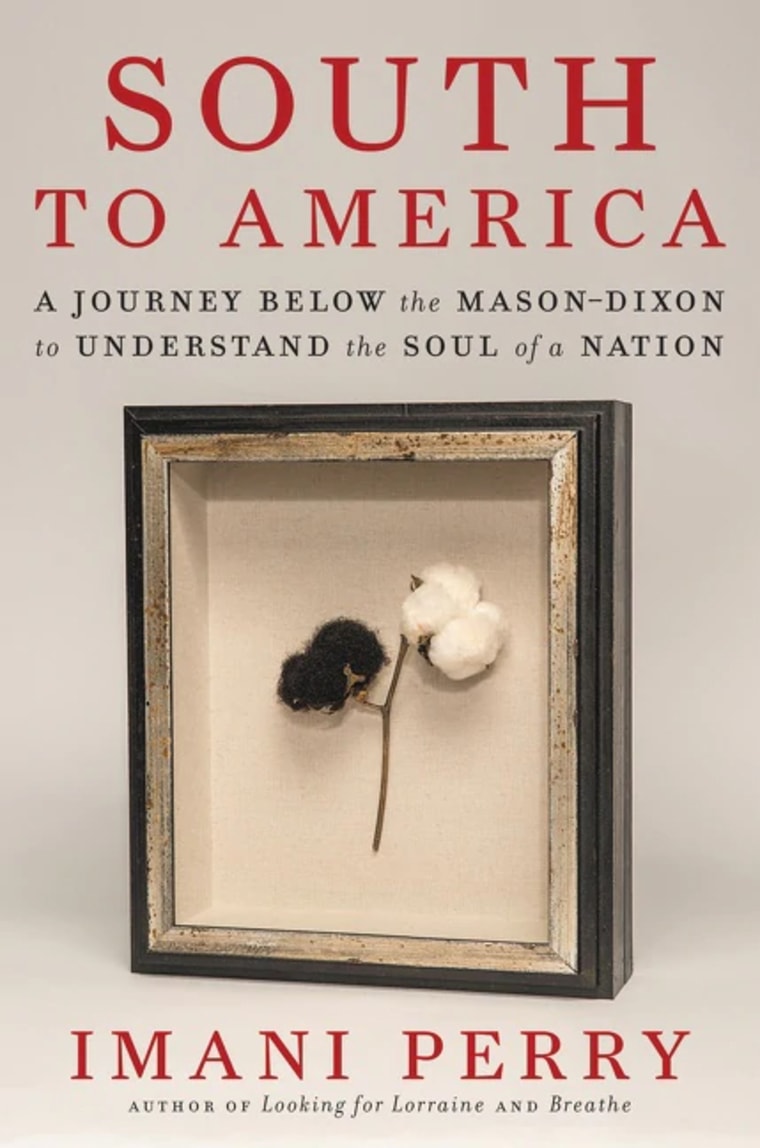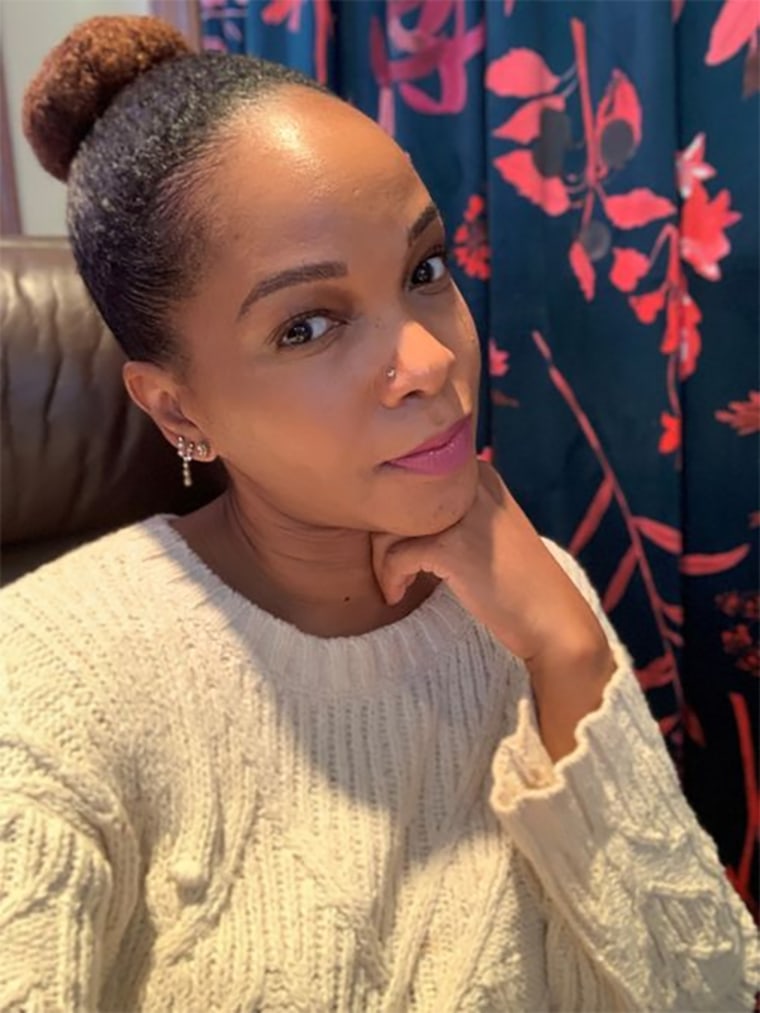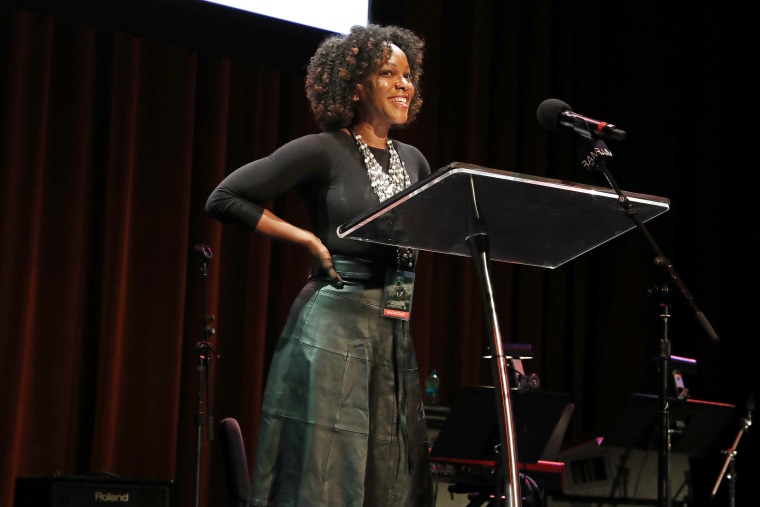In her new book, “South to America: A Journey Below the Mason-Dixon to Understand the Soul of a Nation,” Imani Perry engages with the long literary tradition of writing about one’s travels through the South. Joining writers such as Albert Murray, James Baldwin and V.S. Naipaul, the Alabama native charts the well-worn path into the belly of the country’s most storied region.
Along the way, she shines a light on some of the area's overlooked and willfully buried stories, writing from the perspective of a student of Southern history and literature, while crafting a deeply personal narrative about going home.
“History can’t tell everything, ever. So the choices are always political,” Perry told NBC News. “I’m not telling people the whole history of the South. It’s an invitation to consider that, maybe, the [historical] frameworks, or even the battles that we’re having over the frameworks, are not sufficient.”

Perry, a professor of African American studies at Princeton University, spent five years visiting the locations from the Upper South to the Caribbean that are highlighted in the chapters of “South to America.” Until the pandemic hit, she was often driving from place to place. Later, when movement was limited, she found that she could pull on memories from a lifetime of traveling around the South to enrich her accounts.
As the book opens in the Upper South — where the nation’s founding and its dissolution during the days of the Confederacy loom large — the author’s exhaustive knowledge of the region is on display. But it’s the images of individuals and fleeting encounters that make the historian’s lessons linger in the mind.
In Harpers Ferry, West Virginia, the site of a failed insurrection led by the abolitionist John Brown, Perry encounters a Civil War re-enactor who belongs to a Confederate regiment. During the conversation, she toys with addressing his fictional allegiance, which he performs against the backdrop of a doomed antislavery revolt. But her Southern sensibilities instruct her otherwise.
In Lexington, Virginia, she quickly leaves a diner after realizing it is likely a place only patronized by white locals. Once outside and thinking about her half-eaten plate of grits, Perry’s mind wanders to the regional prejudices Southerners have about the dish: “Anyway, the Shenandoah Valley grits were right to me, but because it seemed I wasn’t where I was supposed to be, I didn’t bother to finish them. But I did wonder if a Black woman in the back had fixed them.”

In Washington, D.C., during a visit that coincides with the opening of the National Museum of African American History and Culture, she returns to the idea of what makes something, like a certain preparation of grits, authentically Southern. Can the capital city, which sits well below the Mason-Dixon Line, be considered Southern? When she asks a Lyft driver, he replies, almost hysterical: “South?? Compared to what, MAINE?”
As someone who was born in Alabama, in the uncontested South, Perry said she felt her own regional bias when she began writing the book and looking deeper into her American roots. That’s why she chose the Mason-Dixon as a starting point: “It’s important to understand that, at least culturally speaking, there are ‘Souths,’ plural.”
“It was important to me that readers could understand both something about the Upper South and about why, when we talk about the South, usually we mean the Deep South: We think about the Black Belt because of the history of cotton,” Perry said, referring to what she describes in the book as a crescent-shaped stretch of land from Virginia to Louisiana and Arkansas.
Perry traveled to Annapolis, while writing the book, after discovering an ancestor who was born in Maryland in 1769 — something she found emotionally jarring to her sense of regional identity as an Alabaman. There, she hoped to see something that would connect her to her Upper South roots.
In the chapter on Maryland, she describes Annapolis as a historically minded, picturesque city that boasts sites like the Banneker-Douglass Museum along with cobblestone streets. Touring one of the city’s well-preserved homes, she is caught off guard when the docent guides her group to the staged kitchen. Struck by the brutal environment, which was once the domain of the home’s enslaved cooks, her thoughts turn to her ancestor: “Tears welled up in my eyes, and I am somewhat embarrassed to say that I felt a momentary relief that if my ancestor, Easter or Esther, worked here, I didn’t know it.”
Eventually, the narrative leaves Perry's more distant homeland behind and settles into the Deep South — before heading to the coast, including her mother’s birthplace of New Orleans, and the Caribbean for the book’s final chapters.
As if it’s an opportunity to rest from her travels, around the halfway mark of the book, she dedicates a chapter to her hometown of Birmingham, Alabama. In it, she lingers over memories of her childhood and her organizer parents.
In a scene that punctuates her relationship to the city, she describes a visit home, in 2019, to interview a fellow Birmingham native, Angela Davis. It is the first time, she writes, that large numbers of people from her professional life are in the same space as her family, or her “people.” And the mood fits the occasion: “When Birmingham came out to see Angela, it was a way to remind each other that we are still here. Prisoners and freedom dreamers alike.”
Like the conversation with the Confederate re-enactor, the scene outside the diner, the haunting image of a kitchen run by enslaved cooks and many other moments woven into the text, the evening in Birmingham allows readers to step into Perry’s complex, nuanced and historically layered South.
“Choosing an encounter allows me to get at the zeitgeist or the heart, the soul, the beat of a place,” she said of writing the passages.
In the book’s conclusion, Perry makes her final stop, in George Floyd’s birthplace of Houston.
Speaking about how Floyd’s murder and the wave of protests that followed shaped the text, Perry said: “It brought me back to the place where I first began [with the book]. There’s this misperception that the South is the most racist place. It allows other regions to feel, like, ‘We’re not racist, because we’re not like that.’”
“And part of what happened in the Black Lives Matter era is the realization that, actually, really egregious racist violence happens everywhere in this country,” she said. “Someone who’s struggled and faced all this adversity — trying to get themselves together and then being kicked back down — that is so much part of the American story of race.”
